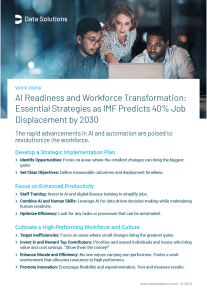Frequently Asked Questions
What are predictive insights and how can they benefit my business?
+-
Predictive insights are data-driven forecasts that help businesses anticipate future trends and behaviors. By leveraging advanced analytics, these insights enable companies to make informed decisions, optimize strategies, and allocate resources effectively. The benefit is a significant improvement in operational efficiency and an increase in ROI, as businesses can proactively address potential challenges and capitalize on opportunities.
How do predictive insights improve customer engagement?
+-
Predictive insights allow businesses to understand customer behavior and preferences better. By analyzing past interactions and data patterns, companies can tailor their marketing efforts and customer experiences, leading to increased satisfaction and loyalty. This personalized approach can drive higher retention rates and boost overall sales, thus enhancing profitability.
Can small businesses also benefit from predictive insights?
+-
Absolutely! Predictive insights are not just for large corporations. Small businesses can leverage these insights to optimize their marketing strategies, manage inventory effectively, and enhance customer service. This means that even with limited resources, small companies can achieve significant growth and improved efficiency with data-driven decisions.
What types of data do I need for effective predictive insights?
+-
To generate effective predictive insights, businesses should focus on collecting high-quality, relevant data, such as customer demographics, purchase history, and engagement metrics. This data allows for accurate forecasting and analysis, ultimately leading to actionable insights that drive business growth and enhance customer experience.
How quickly can we see ROI after implementing predictive insights?
+-
The ROI from implementing predictive insights can often be seen within weeks to months, depending on the business's data integration and analysis capabilities. By swiftly identifying trends and opportunities, companies can make immediate adjustments that positively impact their performance and lead to savings and increased revenue.
What are the challenges in implementing predictive analytics?
+-
Some challenges include ensuring data quality, integrating disparate data sources, and gaining user buy-in for new processes. However, with a clear strategy and the right tools, these challenges can be effectively managed. Successfully overcoming them leads to enhanced decision-making capabilities, improved operational efficiency, and a competitive edge in the market.
How can I ensure my predictive insights align with my business goals?
+-
To align predictive insights with business goals, start by setting clear objectives for what you aim to achieve through data analysis. Involve key stakeholders in the process to ensure that the insights generated directly support strategic initiatives. Regularly review your insights against business performance metrics to ensure ongoing alignment and adjust as necessary.









